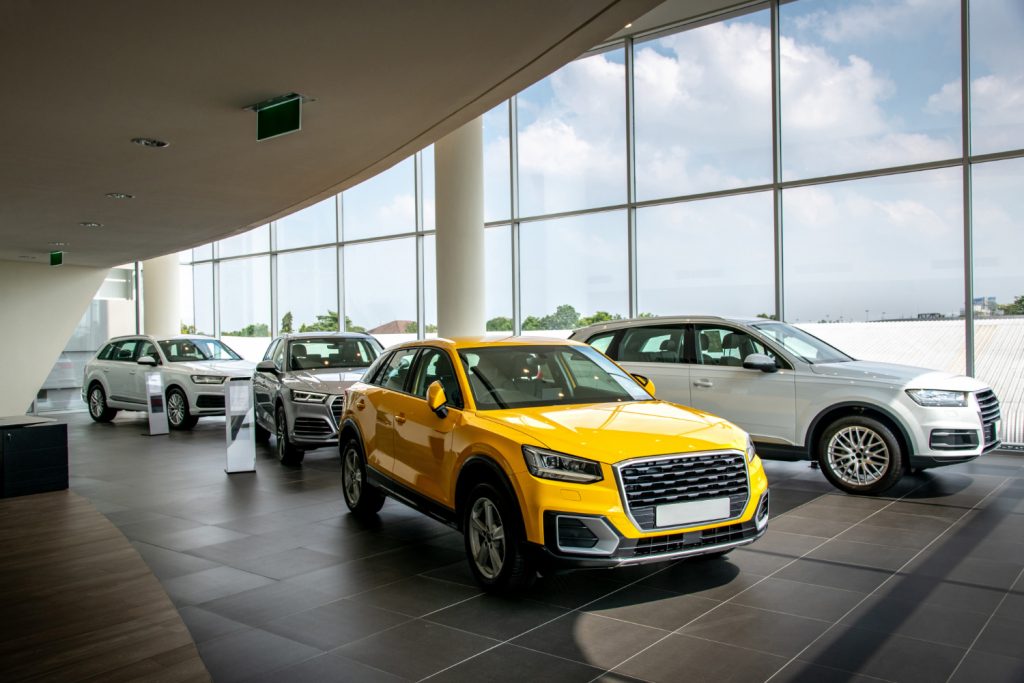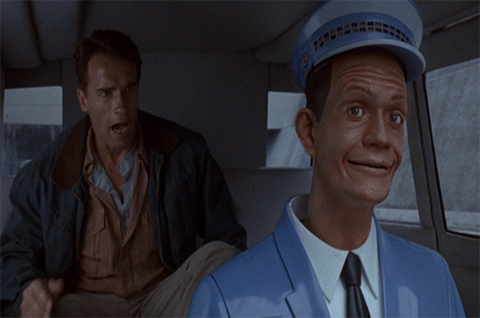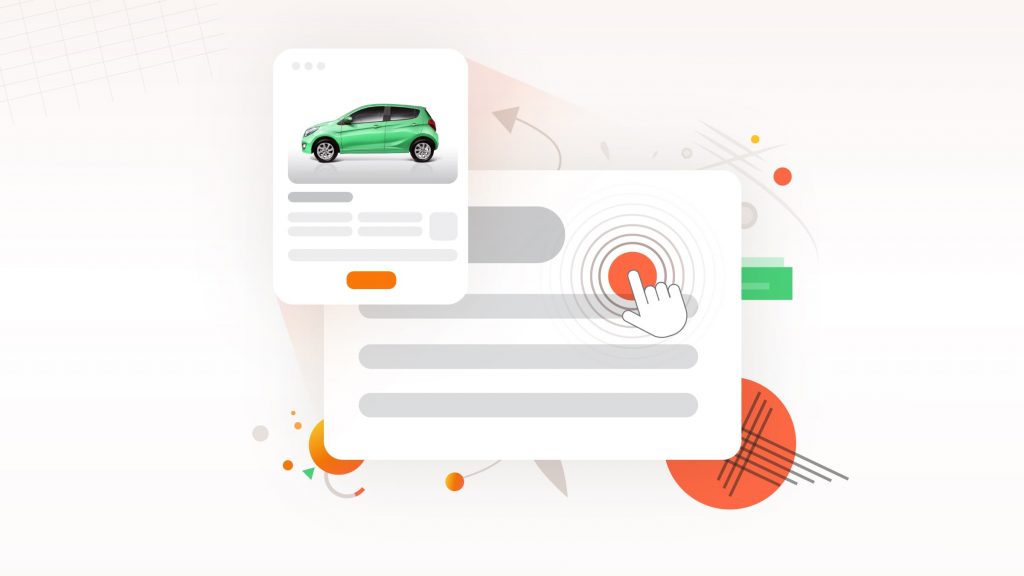Automotive brands looking to stand out are increasingly relying on digital marketing to win a bigger slice of this lucrative market. In fact, online ads for cars and related automotive businesses had been growing consistently year on year until the coronavirus pandemic in 2020.
The auto industry is the second biggest spender on digital marketing in the US, behind retail, with over $14.2 billion spent in 2018.
Shockingly, however, a huge slice of this ad spend has been wasted on click fraud and ad fraud. Based on research by ClickCease in 2020, the automotive industry marketing saw rates of click fraud at 39%. Way above the global average of 14%.
Although in 2021 this level of fraud seems to have levelled out around the average 15%, this still represents a huge loss to any automotive industry marketer.
So why such a high rate of fraud? How much is this really costing the average auto brand? And what can be done to stem the flood of wasted ad dollars?
The move from traditional channels to digital marketing
Advertisements for cars have always been big budget. TV spots with high production values, double page spreads in premium print publications and eye-catching billboards in the most visible spots.
So it stands to reason that as automotive marketing moves to digital, this ad spend would translate to aggressive marketing with banner ads, paid search results and social media marketing.
This growth is not limited to car manufacturers, with auto dealerships, car hire and leasing, and hire purchase companies all spending an ever bigger chunk on digital marketing.
Most automotive marketers are spending thousands of dollars, even hundreds of thousands, every month. So even a small percentage lost to fraud can add up to big bucks.
As an industry with a high value end product, the competitive nature of online marketing draws in various different types of click fraud.
How click fraud works
Invalid traffic is the catch all title for non-human or non-genuine clicks on any paid ad. This can also include accidental clicks such as double clicking on an ad, or when an ad is badly placed on a website or app.
However, the issue of malicious or consistent click fraud, or invalid traffic, is one that is growing in the consciousness of marketers in all industries.
To understand how automotive marketing is impacted by fraud, it’s worth understanding the basics of how PPC fraud, or click fraud, works.

Competitors
The first type of fraud is from competitors or business rivals. Often, a business owner will either organise a campaign to regularly click a direct competitor’s paid search results or banner ads, or outsource these damaging clicks.
Competitor fraud often happens in industries where there is strong competition and with a high cost per click (CPC). The aim is usually to run down a rival’s ad budget with a view to increasing their own visibility.
Does this really happen? Sadly the answer is, yes, much more often that you might think (or hope).
Bots and organised ad fraud
Ad fraud is a specific type of click fraud which sees publishers inflate the payout from ads on their websites. Those websites hosting tons of banners, videos and other integrated ads?
There is a booming industry in underhand traffic, often automated, which is designed to maximise the income for site owners at the expense of advertisers.
This form of click fraud can present itself in numerous ways, such as:
- Automated bots which can perform increasingly complex activities on ads such as completing forms.
- VPN traffic, or virtual private networks. These are used to hide the devices true location and are used by click farms, bots, data center traffic and other non-genuine forms of traffic
- Data scrapers/web scrapers, are used by all manner of programs including legitimate ones like Google or other web services. However the problem is that they can accidentally click on ads, triggering a payout from the advertiser
- Spam bots are an irritant for anyone running a web based business, but that goes double when they start clicking your ads. Yes, spam bots can (and do) click banner ads, paid search results and sponsored social media posts
Brand haters and other malicious clickers
People intentionally clicking on ads, just to mess with your budget and analytics, is an increasingly common occurrence.
A high profile version of this is the recent organised click campaign by fans of British soccer club Manchester United. Unhappy at their club’s attempt to set up a breakaway league, which was just the latest in a series of issues between fans and club owners, the Glazer family, the fans set up a campaign to click the ads of corporate sponsors.
This included car and auto related brands such as Chevrolet, Apollo Tyres and Gulf Oil.
Outside of corporate sabotage, people are increasingly aware that their clicks can be costly to a business. A glance at any ad on Instagram or Facebook will probably include comments from brand haters, who have clicked and engaged on the ad.
The signs of click fraud
There are a number of giveaways that click fraud is costing your ad campaign. With ClickCease, we use a blocklist of known fraudulent sources to stop fraud in real time.
However, there are also a number of other practices that require more advanced protection filters. When we’re blocking fraud on any campaign, including automotive marketing, the typical signs of click fraud include:
- High bounce rates
- Traffic surges
- Lots of VPN traffic
- Multiple device clicks in set time frame (over threshold)
These events do also occur regularly as part of any PPC ad campaign. But, if you’re seeing two or more happening at the same time, it might be time to look closely at your campaigns.
Find out more about click fraud with our complete guide.
Of course, the easiest way to avoid click fraud is to automate your protection using ClickCease. This way you can prevent bots and other forms of invalid traffic on your Google, Bing and Facebook Ads.
Automotive click fraud statistics
Looking at data from our automotive marketing partners here at ClickCease highlights some intriguing data.
In the USA, UK, France, Spain, Sweden and the Netherlands the average rates of click fraud for auto ads is around 10%.
Canada, India, Singapore and Poland see slightly higher rates of between 12-15%, which sits in the average click fraud rate across all industries.
With fraud rates of around 20%, Australia, Germany, Israel and South Africa see higher than average invalid traffic.
But some of the counties with notably high click fraud include:
- Russia – 88%
- New Zealand – 69%
- UAE – 28%
- Philippines – 31%
Using anonymous data from our own clients, we can see that the highest rates of fraud come from high bounce rates, implying either bots or malicious clicks.
These high bounce rate clicks make up around 60-80% of fraudulent clicks on our top automotive marketing accounts.
And these accounts are saving anything up to $20,000 each month by blocking click fraud.
Bots don’t drive

OK, apart from self-driving cars… But, the truth is that the bots clicking your ads are never going to buy your cars or auto products.
Taking back control of your ads means you can be sure that the only people seeing your ads on search or social are… People!
ClickCease is the industry leading click fraud prevention choice for marketing professionals, with real time protection for Google, Facebook, Bing, Instagram and YouTube ads.
With a free trial, you can run an audit and find out if your automotive marketing campaigns are stuck in invalid traffic.
